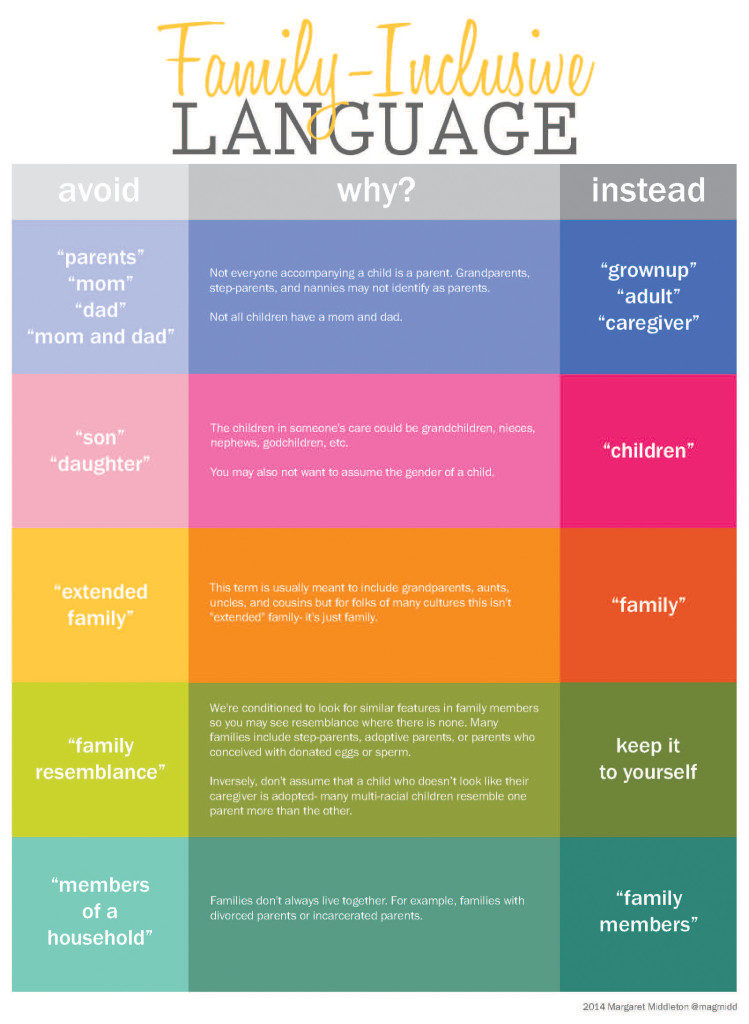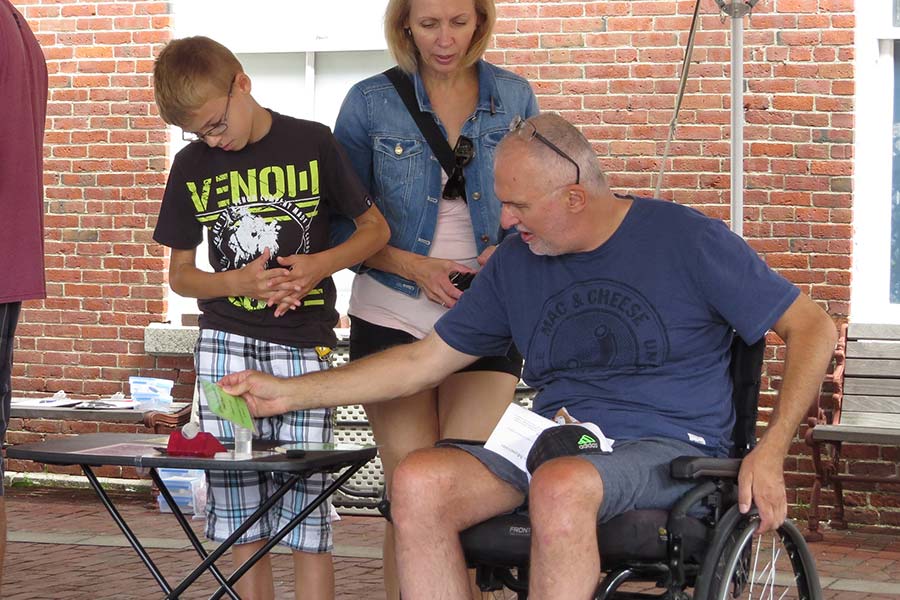Why it is Important
Families come with various needs and expectations. Accessible experiences accommodate these needs so that families feel comfortable during a program or in an exhibit. When they are comfortable and feel welcome, family members of all ages are more likely to fully participate.
Heather Nielsen explains this concept further:
Put it into Practice
An exhibit or program’s environment, language, and provided materials can make people feel welcome or unwelcome, affect movement and interaction, and determine how families work together. Vary the materials, setup, height of interactions, required dexterity, and instructions so that people of all ages and abilities are comfortable participating. Have extra chairs and consider keeping adjustable tables available to accommodate different visitors. Make sure that facilitators feel empowered to appropriately adapt programs for different audiences by providing them with an arsenal of predesigned options.
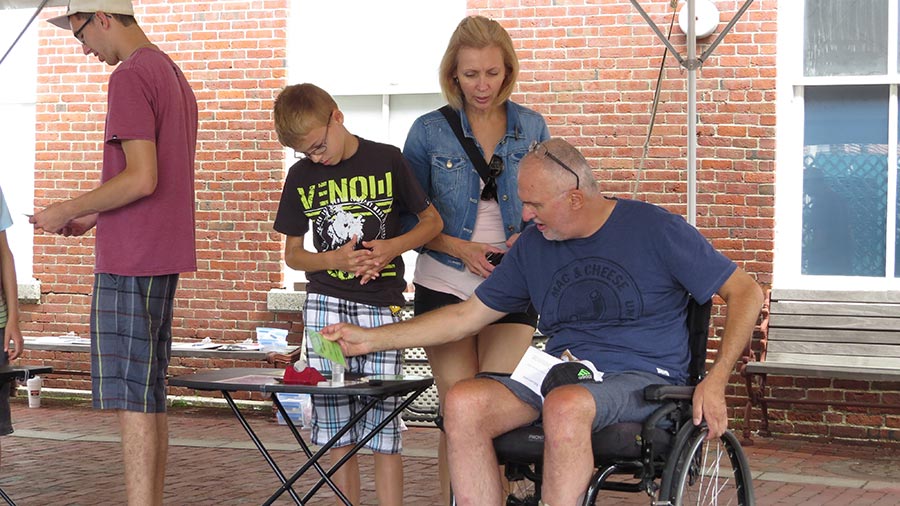


Provide Accessible Materials
Provided materials are key to designing an accessible program or exhibit. Think about varying the materials offered for different ages, abilities, and sizes. How can you accommodate these different members of a family group? Consider height, weight, size, and scale.

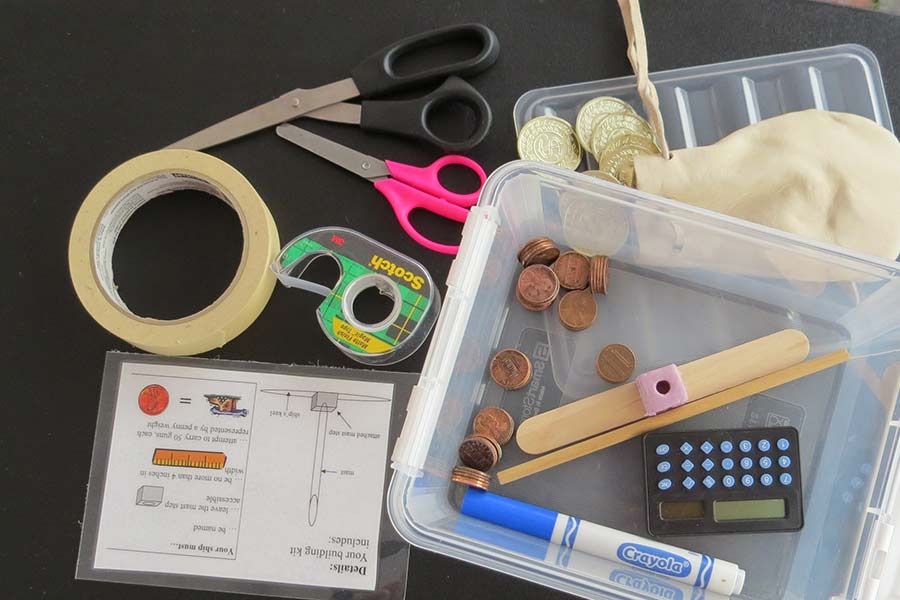
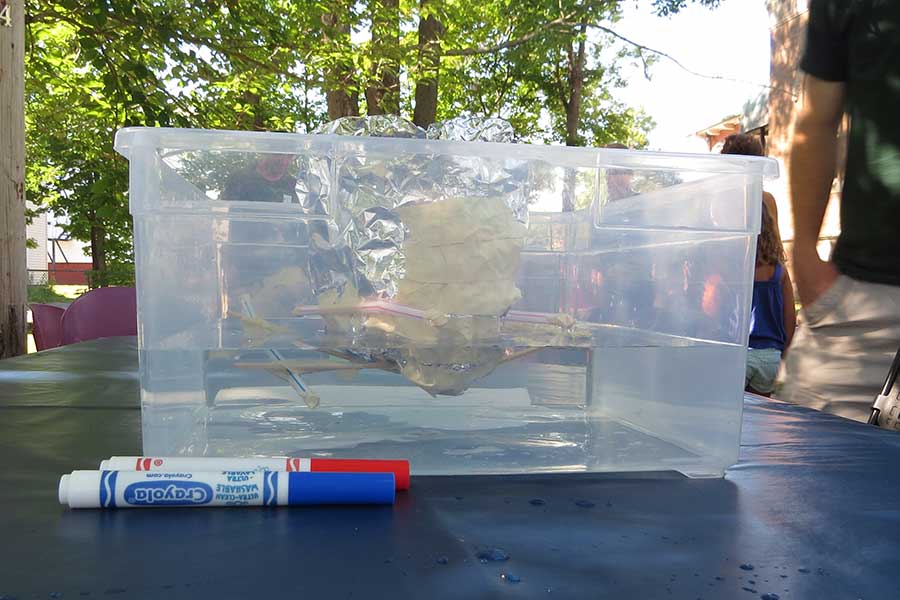
Create Accessible Environments
When designing for a family audience, environments and set-ups should be accessible and comfortable. Be aware of the unintentional messages you might be sending with the set-up. Are objects too high for kids to reach or too low for adults to see? Is there stroller parking, an easy exit in case someone needs to sneak away with a crying child, and quick access to the restrooms, a place to wash hands, trash, and water? Is the program space visible and well-marked?
Design Accessible Exhibit Interactives
In the All Hands on Deck exhibit at the USS Constitution Museum, visitors have the chance to learn about life aboard Constitution through hands-on activities. One of these activities is a holystoning interactive. Holystoning removes tar and dirt from the deck of a ship by scrubbing it with a sandstone block or a holystone. This necessary work kept the ship clean and looking good. Sailors despised this hard and uncomfortable work, while officers valued a well-kept ship.
A life-size cut-out of a sailor on his knees holystoning (scrubbing) the deck encourages visitors through the main label to “Get on your knees and scrub!” The interactive consists of a low platform with wooden planks that resembles the deck of a ship. In addition there is a small raised platform that is accessible to handicapped visitors or visitors who do not want to get down on their knees in order to try the activity. Once they are in position, visitors use one of the holystones to scrub the deck. The addition of a raised platform encourages visitors of all abilities to try their hand at holystoning. It provides a comfortable experience for everyone.
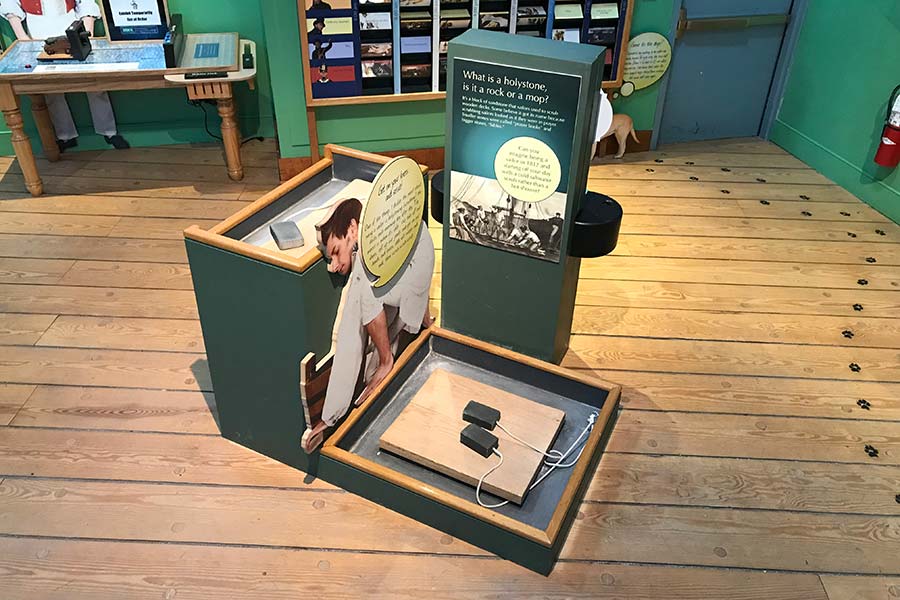
Use Inclusionary Language
Inclusionary language goes a long way in making all participants feel comfortable and welcome.
Use this chart, excerpted from an Incluseum blog post by exhibit designer Margaret Middleton, as a guide to using inclusionary language.
